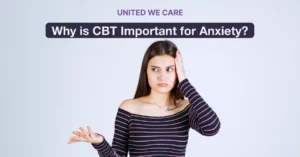In today’s world, communication – rather, effective communication – has reduced significantly mainly due to lack of time. Communication lags in family and society are disrupting interpersonal and intrapersonal relationships, leading to various psychological problems. Long-term psychological disturbances have given rise to societal issues of suicide, murder, and other serious crimes.
Therapeutic Metacommunication in Counseling or Family Therapy
Psychotherapy goes a long way in dealing with these problems. Clinical psychologists use different strategies to communicate with patients and bring out their sufferings.
Humans communicate in three methods, broadly:
- Verbal
- Non-verbal
- Visual
What is Metacommunication?
Meta-communication is a means of communication through non-verbal expressions like facial expressions, body language, gestures, voice tones, etc. It is a secondary process of communication used along with verbal communication.
Sometimes, these can become the primary method of communication between two individuals. These secondary cues act as the primary cues used to interpret the communication between them. Meta-communication then becomes a collaborative process of gathering maximum information during such conversation.
Our Wellness Programs
Who Invented Metacommunication?
Gregory Bateson, a social scientist, coined the term ‘meta-communication’ in 1972.
Looking for services related to this subject? Get in touch with these experts today!!
Experts

Banani Das Dhar

India
Wellness Expert
Experience: 7 years

Devika Gupta

India
Wellness Expert
Experience: 4 years

Trupti Rakesh valotia

India
Wellness Expert
Experience: 3 years

Sarvjeet Kumar Yadav

India
Wellness Expert
Experience: 15 years

Shubham Baliyan

India
Wellness Expert
Experience: 2 years
History of Metacommunication
Donald Kessler in 1988 used meta-communication as a therapeutic means to improve the interpersonal relationship between the therapist and patient. In his experience, this led to a better understanding between them and provided true feedback to the therapist about the patient’s current mental status.
How Metacommunication is Used for Mental Health
Meta-communication is a psycho-therapeutic tool to treat behavioral disorders. It is considered one of the best tools in psychotherapy to address family problems arising due to behavioral miscommunication between one or more family members. During group family therapy sessions, sometimes, the therapist has to depend mainly on secondary cues to come to any conclusions, since a family member might not be comfortable speaking in front of other members.
Example of Therapeutic Metacommunication
For example, it is much easier for a doctor or therapist to assess the patient when they are physically present, rather than through a telephonic conversation. When physically present, the therapist can actively listen to the problems of the patient. At the same time, they analyze the patient’s expressions and body language to form an effective treatment strategy.
How to Start the Therapeutic Metacommunication Process
Meta-communication can be initiated by:
- Asking an introductory question to the patient, like “How are you feeling today?”
- Sharing the therapist’s observations with the patient, like “I think you are disturbed today.”
- The therapist can also share their feelings, views, or experiences with the patient on related matters. This helps to develop a strong bond between the therapist and the patient.
Types of Meta-Communication
Semantic scholar William Wilmot’s classification focuses on meta-communication in human relationships.
Relationship-level meta-communication
The non-verbal signals between a patient and therapist grow with time. The signals or facial expressions the patient gives at the first therapy session will not be the same after 30 sessions. This is because the relationship has grown between the patient and therapist.
Episodic-level meta-communication
This type of communication occurs without any relational links. It includes only one interaction. The expression between patient and therapist is different if the patient knows that they are interacting with the doctor only once in a lifetime. If the patient knows that the interaction has just begun and can continue, the verbal and non-verbal expressions will be completely different.
Principles of meta-communication
A therapist should follow the following principles in their sessions when it comes to meta-communication:
- Engage the patient in a collaborative interaction during the intervention. The patient should feel the authenticity of the therapist’s intervention.
- The patient should feel at ease while sharing their struggle with the therapist.
- The therapist should be open-minded in approaching the patient. This makes the patient non-defensive in their communication.
- The therapist should acknowledge their feelings towards the patient. This helps the patient to develop a strong relationship with the therapist.
- The questions framed by the therapist should focus on the present situation and be specific. This helps the patient realize their behavior and what needs to be changed.
- The therapist should constantly monitor the closeness or relatedness developing between them and the patient. Any shift of closeness might directly impact the therapy.
- The therapist must re-evaluate the situation frequently to avoid missing any ongoing change of the situation.
- Finally, the therapist must accept and expect failures in communication and be prepared to undergo the same impasse repeatedly.
Therapy Scenarios for Metacommunication
It is not only psychologists who use counseling as a part of their therapy. Other medical practitioners like surgeons, physiotherapists, and nurses also use meta-communication as a tool during their counseling sessions.
Scenario 1
A patient comes with a family member for a counseling session. The therapist gets different expressions or nonverbal cues when interacting with the patient alone and in the presence of the family member.
Scenario 2
A patient looks attentive during the counseling therapy but their body language does not appear to be so. They may be frequently looking at the watch or fidgeting with their phone.
Scenario 3
A child complains of frequent stomach pain with no apparent clinical findings. The therapist depends on non-verbal cues to verify the actual situation. They then discover that the reason for the child’s frequent stomach pain was to avoid attending school.
How Effective is Therapeutic Metacommunication in Therapy?
Meta-communication should always be correlated with other methods of communication to arrive at definitive conclusions regarding the patient’s treatment. However, meta-communication can be used as the sole means of communication in people who have lost their ability to communicate. They may be people affected by certain mental disorders or who are mute, or children.
The effectiveness of counseling depends upon the correct interpretation of the non-verbal cues given by the patient to the therapist. The experience of the therapist helps to correctly interpret these meta-communicative signals. All psychotherapy practitioners should utilize meta-communication to develop a strong patient-therapist relationship.



 Conflict Management in Relationships
Conflict Management in Relationships

 Healing from Heartbreak
Healing from Heartbreak
 Coping With Anxiety
Coping With Anxiety
 Get Started With Mindfulness
Get Started With Mindfulness
 Healing With Meditation
Healing With Meditation








